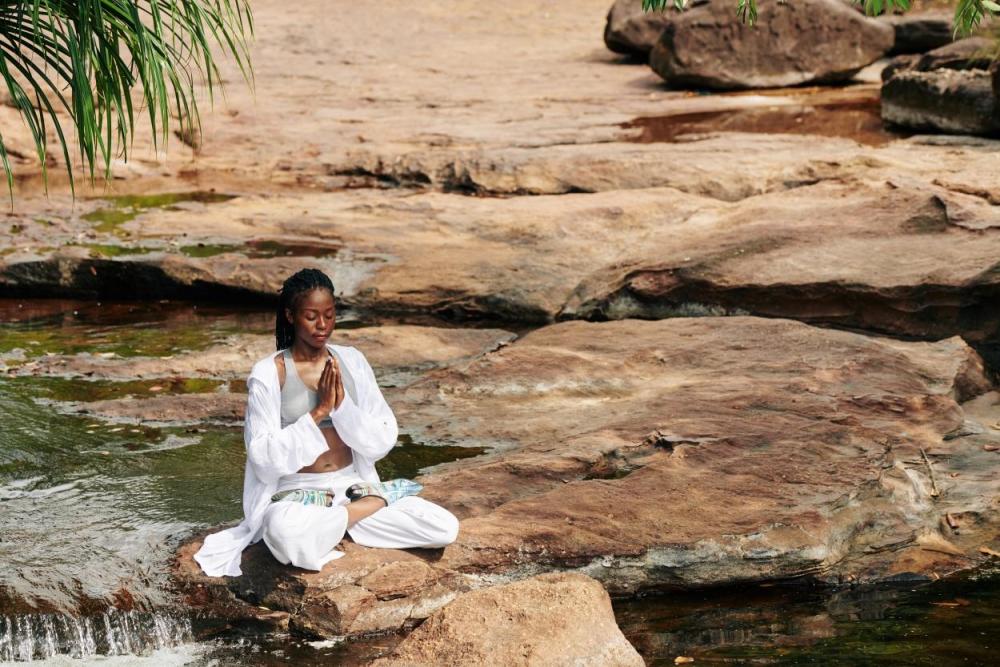Breaking free from toxic relationship patterns starts with awareness and self-love. This guide helps you identify harmful behaviors, set boundaries, and rebuild confidence for healthier, more fulfilling connections.
Toxic relationships can take a serious toll on your emotional and mental well-being. The first step in protecting yourself is recognizing the signs — whether it's constant criticism, manipulation, or feeling drained after every interaction. A toxic relationship isn't always obvious; sometimes, it creeps in subtly, eroding your self-esteem and leaving you feeling guilty or inadequate without a clear reason.
It’s important to remember that toxicity isn’t just about physical abuse. There are many types of toxic relationships that we often find ourselves caught in without even realizing it. Maybe it’s the partner who makes you feel like you’re never enough, or a friend who constantly puts you down. It could be family members who treat you like you owe them everything or co-workers who drain your energy with constant negativity. Whatever the situation, toxic behavior in relationships can take many forms, and sometimes, the hardest part is recognizing it.
The good news? You have the power to break free and reclaim your happiness. Healing from toxic patterns isn’t always easy, but it’s possible with self-awareness, boundaries, and the right support. In this article, we’ll dive into how to identify different types of toxic relationships, and, more importantly, how to take steps toward letting go of toxic patterns and rebuild your confidence for healthier, more fulfilling connections.
You deserve a relationship where you feel valued, respected, and truly yourself — let's start that journey today. 💜
How to recognize toxic traits in relationships
It’s easy to get caught up in a toxic relationship without even realizing it. In the beginning, the signs can be subtle — often hidden behind the excitement of new love or the hope that things will eventually get better. But over time, those red flags become harder to ignore, leaving you feeling drained and uncertain.
Pro tip: Pay attention to recurring patterns in your relationship. Are they helping you grow, or are they tearing you down?
Telltale signs of toxic behavior in relationships
- Toxic Communication: If conversations are filled with constant arguments, emotional manipulation, sarcasm, or aggressive language, it’s time to take a step back. Healthy relationships are built on open and respectful dialogue—not constant tension and negativity.
- Power Imbalance: When one partner constantly dominates — whether financially, emotionally, or in decision-making — it creates an unhealthy dynamic that can leave you feeling powerless. Relationships should be a partnership, not a dictatorship.
- Lack of Support: A loving relationship should feel like a safe space where both partners uplift and encourage each other. If you’re facing life’s ups and downs alone, it’s a major red flag that something’s off.
- Excessive Control: Does your partner dictate your choices, limit your independence, or make you feel guilty for spending time with friends and family? Controlling behavior is a serious warning sign of a toxic relationship.
Pro tip: Take a moment to write down behaviors that make you feel uncomfortable or unhappy. Recognizing these patterns can be the first step in making positive changes. Identifying toxic traits in relationships is tough, but awareness is key to breaking free and reclaiming your happiness.
Recognizing and addressing toxic traits is a crucial step towards a better relationship. Awareness is the first step to positive change. (Picture: Envato Elements)
Changing toxic patterns in relationships
Letting go of toxic relationship habits takes time, effort, and a whole lot of self-love — but it’s totally possible. With the right mindset and tools, you can break free from unhealthy cycles and create space for relationships that make you feel valued, respected, and truly happy. Here’s how you can start:
1. Get to know yourself better
The first step to change is always to look inward. Ask yourself:
- Are there habits you keep repeating that might not be serving you?
- Do you hold any beliefs about love that could be holding you back?
Try this: Write down moments from past relationships where things felt off. Spotting patterns will help you avoid falling into the same traps again.
2. Boost your self-esteem
Toxic patterns often stem from low self-esteem, making it easier to fall into cycles of jealousy, insecurity, and emotional dependence. The stronger your confidence, the healthier your relationships become.
- Take time to invest in you . Whether it’s picking up a new hobby, practicing self-care, or diving into personal growth activities that help you reconnect with your worth. When you feel good about yourself, you’ll naturally attract healthier dynamics and set better standards in love.
3. Upgrade your communication game
Toxicity often creeps in when communication breaks down. Strengthening how you express yourself can transform the way you connect.
- Listen without interrupting. Sometimes, just hearing someone out can change everything. Keep in mind that we all crave to be heard.
- Express your feelings without blame. Leave behind “You always/you never…” and start using “I feel/ I would like…” to keep things constructive.
- Be clear about what you need. No more expecting your partner to read your mind — unless they secretly moonlight as a psychic, in which case, wow, lucky you!
4. Set boundaries — and stick to them
Healthy relationships thrive on boundaries. They’re not walls; they’re guidelines that show what makes you feel safe and respected.
- Figure out your non-negotiables. What behaviors are absolute deal-breakers for you?
- Stay firm but kind. When a boundary is crossed, calmly reinforce it without guilt.
Example: “I need some quiet time after work to recharge — it’s important for my well-being.”
Respecting your own boundaries is the foundation of peace with yourself and your partner. (Picture: Envato Elements)
5. Get comfortable saying no
Saying “no” can feel awkward, but it’s essential for breaking toxic patterns. Practice gentle ways to set limits without feeling guilty, like:
- “I can’t do that right now, but I’d love to help later.”
- “This doesn’t feel right for me.”
Every time you say no to what drains you, you are actually saying yes to your well-being.
6. Set relationship goals together
Healthy relationships thrive when both partners are on the same page. Sit down with your partner and set meaningful goals that foster connection and growth. Whether it’s improving communication, planning more quality time, or finding better ways to handle conflicts, having shared intentions strengthens your bond and keeps you both aligned.
Think of it as a relationship roadmap — knowing where you're headed makes the journey a whole lot smoother (and way more fun).
7. Seek professional support when needed
Sometimes, breaking free from toxic behaviors in relationships requires outside help — and that’s okay. A therapist can give you the tools and perspective needed to navigate emotional challenges and build stronger, healthier connections moving forward.
Letting go of bad patterns isn’t just about leaving toxic relationships behind — it’s about stepping into the kind of love and connection you truly deserve.
Knowing when to leave toxic relationships
Staying in toxic relationships can lead to long-term emotional damage. Over time, you might start to doubt your self-worth, question your decisions, or feel like you can’t trust your own instincts. Toxic traits like manipulation and gaslighting erode your confidence, and over time, you might lose sight of what a healthy relationship looks like.
In the worst cases, these toxic patterns can even affect your mental and physical health, leading to anxiety, depression, and feelings of isolation. So, how do you know when it’s time to leave?
Trust yourself and prioritize your well-being
The key is self-awareness. You have to trust your gut. If you feel like you’re giving more than you’re getting, if you’re constantly walking on eggshells, or if you feel like the other person’s needs always come before yours, those are big red flags. Toxic relationships thrive on these imbalances.
Remember: you deserve love, respect, and peace of mind — not constant drama, criticism, or emotional turmoil.
Acknowledge it’s time to walk away
We’ve all heard the saying, “You don’t have to put up with bad behavior,” but it’s not always that easy, especially when we find ourselves stuck in toxic relationships. Sometimes, it feels like we can fix things. We try to communicate, make compromises, or even make excuses for the other person. But when the toxic behavior doesn’t stop, it’s time to face the tough reality: walking away might be the healthiest choice for your mind, heart, and soul.
Know when it is time to leave a relationship. (Picture: Envato Elements)
Build healthier connections
Once you leave a toxic relationship, it’s important to focus on your healing and personal growth. Surround yourself with people who support and uplift you. Rediscover your passions, hobbies, and goals. Take the time to rebuild your confidence and reconnect with the things that bring you joy.
Remember: You are not the problem. You deserve relationships that make you feel seen, heard, and valued. When you leave behind the toxicity, you make space for the kind of connections that help you grow and become the best version of yourself.
Last but not least: Self-reflection
Take a moment to reflect on your own relationships — are there any toxic behaviors you might be contributing to? It’s easy to point fingers, but sometimes we too can unknowingly engage in patterns that harm others. Whether it's being overly critical, avoiding confrontation, or shutting people out, recognizing our own toxic traits is the first step toward change. This self-awareness allows us to grow and build healthier, more supportive connections with the people we care about. It’s never too late to break the cycle and create more positive dynamics in our lives.





Join the conversation
You are posting as a guest. If you have an account, sign in now to post with your account.
Note: Your post will require moderator approval before it will be visible.
There are no comments to display.